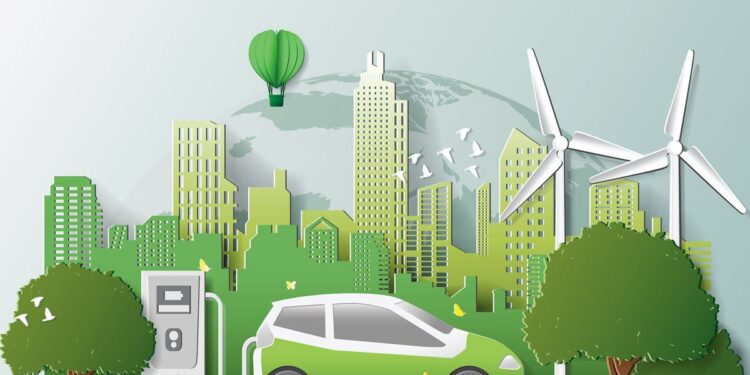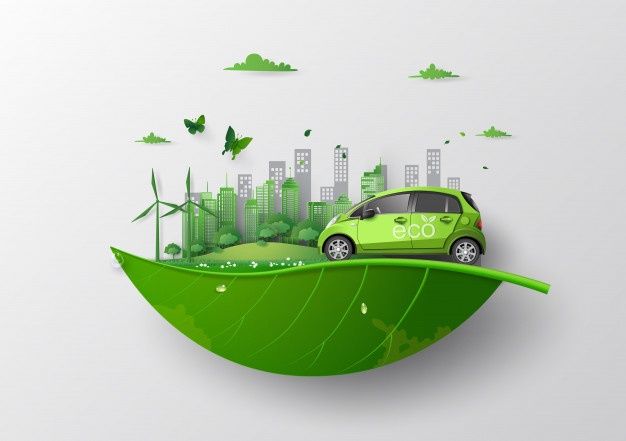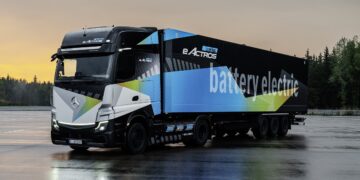In today’s rapidly evolving world, the automotive industry is experiencing a paradigm shift as eco-friendly vehicles become a dominant force on roadways worldwide. No longer confined to niche markets, green cars are revolutionizing the way we commute, do business, and address environmental challenges. As governments and consumers alike grow increasingly aware of climate change, air pollution, and fossil fuel depletion, the demand for sustainable transportation solutions has never been higher.
This article delves into the multifaceted world of eco-friendly cars, exploring their evolution, technological innovations, economic and environmental benefits, as well as the challenges and future prospects facing the industry. By analyzing current trends and advancements, we aim to provide a comprehensive overview of how green vehicles are transforming global transportation and setting new standards for the future of mobility.
The Evolution of Eco-Friendly Vehicles
The journey toward sustainable transportation has been marked by continuous innovation and a growing commitment to environmental stewardship. Over the past few decades, technological breakthroughs and regulatory pressures have driven the automotive industry to adopt cleaner, more efficient alternatives to conventional internal combustion engine (ICE) vehicles.
Historically, early hybrid cars emerged as a bridge between traditional gasoline-powered models and fully electric vehicles. Manufacturers began integrating electric motors with conventional engines to reduce fuel consumption and emissions. As battery technology improved and governments implemented stricter emission standards, fully electric vehicles (EVs) rapidly gained momentum. Today, alongside EVs, hydrogen fuel cell vehicles (FCVs) and plug-in hybrids offer a diverse portfolio of eco-friendly transportation options that cater to various market segments.
The transformation is fueled by:
A. Technological Advancements: Continuous improvements in battery chemistry, electric motors, and control systems have enhanced vehicle performance and range.
B. Environmental Regulations: Global policies aimed at reducing carbon footprints have pushed automakers to innovate and invest in cleaner technologies.
C. Consumer Awareness: Rising public concern about air quality and climate change has led to increased demand for vehicles that minimize environmental impact.
D. Economic Incentives: Tax breaks, rebates, and other financial incentives have made green vehicles more accessible to a broader audience.
These driving factors have not only accelerated the adoption of eco-friendly vehicles but also redefined the automotive market, positioning green cars as a critical component of modern transportation systems.
Environmental and Economic Benefits of Green Cars
Eco-friendly cars offer significant advantages over their traditional counterparts, impacting both the environment and the economy in profound ways. Their widespread adoption is central to addressing global challenges such as climate change, urban congestion, and dependence on fossil fuels.
A. Environmental Benefits
Green vehicles contribute to a cleaner environment by reducing harmful emissions and promoting sustainable energy use. Key environmental benefits include:
A. Reduced Greenhouse Gas Emissions: Electric vehicles and hybrids emit little to no carbon dioxide, significantly lowering the overall greenhouse gas footprint.
B. Improved Air Quality: With lower emissions of pollutants like nitrogen oxides (NOx) and particulate matter, green cars help improve urban air quality and reduce respiratory illnesses.
C. Lower Noise Pollution: Electric vehicles operate more quietly than traditional engines, contributing to reduced noise pollution in urban centers.
D. Conservation of Natural Resources: By relying on renewable energy sources and advanced battery technologies, eco-friendly cars help conserve fossil fuels and other non-renewable resources.
B. Economic Benefits
The economic implications of adopting green vehicles extend beyond mere fuel savings. They include broader impacts on energy independence, job creation, and long-term cost efficiency.
A. Lower Operating Costs: Electricity is generally more cost-effective than gasoline, and EVs have fewer moving parts, which means lower maintenance expenses over the vehicle’s lifetime.
B. Enhanced Energy Security: Diversifying the energy mix by incorporating renewable energy sources reduces dependence on imported oil and contributes to national energy security.
C. Job Creation and Innovation: The shift toward green technology spurs innovation in the automotive sector and creates new opportunities in research, manufacturing, and infrastructure development.
D. Incentives and Subsidies: Many governments offer tax credits, rebates, and other incentives that make purchasing eco-friendly vehicles more financially attractive for consumers.
C. Societal Impact
Beyond the direct environmental and economic advantages, eco-friendly cars have a broader societal impact. They contribute to healthier communities, support sustainable urban planning, and pave the way for a cleaner, greener future.
A. Healthier Living Environments: With reduced emissions and improved air quality, communities benefit from a lower incidence of pollution-related health issues.
B. Sustainable Urban Development: Eco-friendly transportation supports the development of smart cities that integrate renewable energy, efficient public transit, and sustainable infrastructure.
C. Educational Opportunities: The growing market for green vehicles has spurred academic research and training programs, equipping the next generation of engineers and technologists with the skills needed to drive further innovation.
Technological Innovations Driving Green Vehicles
The advancement of eco-friendly cars is anchored in a series of technological breakthroughs that continue to enhance performance, range, and efficiency. These innovations are key to overcoming the limitations of early green vehicles and are central to their growing appeal.
A. Battery Technology
Battery advancements are critical to the success of electric vehicles. Modern batteries not only offer improved energy density but also feature faster charging capabilities and longer lifespans.
A. Lithium-Ion Batteries: The current standard in EVs, lithium-ion batteries provide a good balance of energy density and longevity, although they face challenges related to resource scarcity and recycling.
B. Solid-State Batteries: Emerging as a promising alternative, solid-state batteries offer higher energy density, faster charging times, and enhanced safety due to the absence of flammable liquid electrolytes.
C. Battery Management Systems (BMS): Advanced BMS monitor battery health and performance, optimizing charging cycles and extending overall battery life.
B. Electric Drivetrains and Power Electronics
The efficiency of an electric vehicle largely depends on its drivetrain and power management systems. Advances in these areas have contributed to significant improvements in vehicle performance.
A. Electric Motors: Modern electric motors are designed for high efficiency, providing instant torque and smooth acceleration while minimizing energy losses.
B. Inverters and Converters: These devices are crucial for managing the flow of electricity between the battery and the motor, ensuring optimal performance under various driving conditions.
C. Regenerative Braking Systems: Regenerative braking recaptures energy during deceleration, converting it back into electrical energy to recharge the battery and enhance overall efficiency.
C. Hybrid and Plug-In Hybrid Systems
Hybrid technologies bridge the gap between traditional ICE vehicles and fully electric cars, offering a transitional solution that reduces emissions without sacrificing performance.
A. Mild Hybrids: Utilize a small electric motor to support the gasoline engine, improving fuel economy and reducing emissions in urban driving conditions.
B. Full Hybrids: Capable of running on electric power alone for short distances, these vehicles offer better fuel efficiency and lower emissions than conventional models.
C. Plug-In Hybrids: Combining a larger battery with the ability to plug in for charging, plug-in hybrids provide extended electric-only driving ranges while retaining the flexibility of a gasoline engine.
D. Hydrogen Fuel Cell Technology
Hydrogen fuel cell vehicles represent an alternative pathway to sustainable mobility, offering quick refueling and long driving ranges.
A. Hydrogen Generation and Storage: Advances in hydrogen production and storage technologies are making it more feasible to use hydrogen as a clean energy source for vehicles.
B. Fuel Cell Efficiency: Modern fuel cells convert hydrogen into electricity with high efficiency, producing only water vapor as a byproduct.
C. Infrastructure Development: Although still in its infancy compared to EV charging networks, investment in hydrogen fueling stations is increasing, driven by government incentives and private sector initiatives.
E. Autonomous and Connected Technologies
The integration of autonomous driving features and connected vehicle technology enhances the efficiency and safety of eco-friendly cars. These systems leverage sensors, artificial intelligence, and real-time data analytics to optimize driving performance.
A. Advanced Driver Assistance Systems (ADAS): Technologies such as adaptive cruise control, lane-keeping assistance, and automated braking improve safety and reduce driver fatigue.
B. Vehicle-to-Everything (V2X) Communication: By enabling vehicles to communicate with each other and with road infrastructure, V2X technology enhances traffic flow, reduces congestion, and improves overall road safety.
C. Artificial Intelligence: AI algorithms analyze driving patterns, predict potential hazards, and continuously improve vehicle performance through machine learning techniques.
Challenges Facing the Eco-Friendly Vehicle Industry
Despite the remarkable progress and numerous benefits, the transition to eco-friendly vehicles is not without its challenges. Several obstacles must be addressed to fully realize the potential of green transportation.
A. Infrastructure Limitations
One of the most significant hurdles facing eco-friendly vehicles is the need for a robust and widespread infrastructure.
A. Charging Station Availability: The success of electric vehicles depends on the availability of fast and convenient charging stations, particularly in urban areas and along major highways.
B. Hydrogen Refueling Networks: The infrastructure for hydrogen fuel cell vehicles is still underdeveloped, limiting their practicality and widespread adoption.
C. Grid Capacity and Reliability: As the number of electric vehicles increases, so does the demand on electrical grids. Upgrading grid capacity and ensuring reliability are critical for supporting large-scale EV adoption.
B. Production Costs and Economic Viability
While eco-friendly vehicles offer long-term savings and environmental benefits, the initial production costs remain high.
A. High Battery Costs: Despite falling prices, batteries still represent a significant portion of the cost of an electric vehicle.
B. Manufacturing Challenges: Transitioning from traditional production methods to the manufacturing of green vehicles requires significant investment in new technologies and processes.
C. Economies of Scale: As production volumes increase, costs are expected to decline; however, reaching these economies of scale remains a challenge for many manufacturers.
C. Consumer Acceptance and Perception
Changing consumer behavior and overcoming skepticism are crucial for the mass adoption of eco-friendly vehicles.
A. Range Anxiety: Concerns about the driving range of electric vehicles continue to affect consumer decisions, even as technological advancements improve battery performance.
B. Initial Investment Concerns: The higher upfront costs of eco-friendly vehicles can deter potential buyers, despite long-term savings in fuel and maintenance expenses.
C. Awareness and Education: Increasing consumer understanding of the benefits and capabilities of green vehicles is essential to shift market perceptions and encourage adoption.
D. Regulatory and Policy Challenges
Government policies play a pivotal role in shaping the future of eco-friendly transportation. However, navigating complex regulatory landscapes can be challenging.
A. Inconsistent Global Standards: Variations in emission standards and regulations across different regions can complicate the manufacturing and distribution of eco-friendly vehicles.
B. Subsidy and Incentive Fluctuations: Changes in government incentives and subsidies can affect market stability and investment in green technology.
C. Environmental Regulations: As governments impose stricter environmental standards, manufacturers must continually adapt their technologies to remain compliant while balancing cost and performance.
Global Market Impact and Trends
The surge in eco-friendly vehicles is not just a technological or environmental shift—it is also reshaping global markets. The rise of green cars has significant economic, social, and geopolitical implications.
A. Market Growth and Consumer Demand
The global demand for eco-friendly vehicles is on an upward trajectory, driven by increasing environmental awareness and supportive policies.
A. Rapid Adoption Rates: Countries across Europe, Asia, and North America are witnessing a surge in EV and hybrid vehicle sales.
B. Diverse Consumer Demographics: Eco-friendly vehicles are no longer confined to early adopters; they are gaining popularity among a broader range of consumers, from urban professionals to families.
C. Competitive Pricing Models: As technology matures and production scales up, the cost gap between traditional and green vehicles continues to narrow, making them more accessible to the mass market.
B. Leading Manufacturers and Innovators
A handful of pioneering companies are at the forefront of the eco-friendly vehicle revolution. These industry leaders are not only investing heavily in research and development but are also setting benchmarks for quality, efficiency, and sustainability.
A. Global Automotive Giants: Major car manufacturers are transitioning entire product lines to include electric and hybrid models, reflecting a commitment to sustainable practices.
B. Tech-Driven Startups: New entrants specializing in green technology are disrupting traditional markets with innovative solutions that combine advanced engineering with eco-friendly design principles.
C. Collaborative Ventures: Strategic partnerships between traditional automakers, tech companies, and energy providers are accelerating the development and deployment of sustainable transportation solutions.
C. Economic and Environmental Policy Implications
The shift toward eco-friendly vehicles carries profound implications for public policy and the global economy.
A. Government Incentives: Subsidies, tax rebates, and other financial incentives play a critical role in promoting the adoption of green cars.
B. Trade and Industry Regulations: International trade agreements and regulatory frameworks are increasingly emphasizing environmental sustainability, influencing global market dynamics.
C. Investment in Renewable Energy: The demand for eco-friendly vehicles is driving investments in renewable energy infrastructure, from solar-powered charging stations to advancements in battery recycling and reuse.
Future Prospects and Innovations
The future of eco-friendly vehicles is bright, with numerous technological breakthroughs and market trends set to further transform global transportation. As the industry matures, several emerging trends will define the next chapter in sustainable mobility.
A. Enhanced Battery and Energy Storage Solutions
Advancements in battery technology remain at the forefront of eco-friendly vehicle development. Researchers and manufacturers are focused on developing batteries that offer greater range, faster charging, and improved safety.
A. Next-Generation Batteries: Innovations such as solid-state batteries and advanced lithium-ion formulations promise to revolutionize energy storage, making electric vehicles even more competitive with traditional cars.
B. Recycling and Sustainability: As battery production scales up, sustainable recycling methods are becoming critical to reduce environmental impact and recover valuable materials.
B. Integration with Smart Cities and IoT
The convergence of eco-friendly vehicles with smart city initiatives and the Internet of Things (IoT) will create interconnected transportation ecosystems that optimize energy use and traffic flow.
A. Connected Infrastructure: Vehicles integrated with smart sensors and communication networks can interact with traffic lights, parking systems, and public transit to create seamless urban mobility.
B. Data-Driven Insights: Real-time analytics will enable better route planning, reduced congestion, and enhanced safety measures, contributing to more efficient and sustainable city planning.
C. Autonomous Driving and Shared Mobility
Autonomous driving technology is poised to further enhance the appeal of eco-friendly vehicles by integrating them into broader shared mobility systems.
A. Driverless Fleets: Fully autonomous, electric ride-sharing fleets could reduce the number of vehicles on the road, decrease emissions, and optimize urban transportation networks.
B. Mobility as a Service (MaaS): The integration of autonomous, eco-friendly vehicles into MaaS platforms will offer convenient, on-demand transportation solutions that prioritize sustainability and efficiency.
D. Global Collaborations and Policy Reforms
The widespread adoption of green vehicles is not solely a technological challenge—it requires coordinated global efforts to harmonize policies, invest in infrastructure, and drive innovation.
A. International Standards: Collaborative efforts to standardize charging protocols, safety regulations, and environmental standards will facilitate the global expansion of eco-friendly vehicles.
B. Public-Private Partnerships: Governments, private enterprises, and research institutions must work together to accelerate the transition to sustainable transportation by pooling resources and expertise.
Societal Impact and Cultural Shifts
The transformation brought by eco-friendly vehicles extends beyond economics and technology—it is also reshaping societal values and cultural norms. As green cars become more common, public attitudes toward sustainability and environmental responsibility are evolving.
A. Increased Environmental Awareness: The visibility of eco-friendly vehicles on the road reinforces the importance of sustainable practices and encourages consumers to make environmentally conscious choices.
B. Urban Lifestyle Changes: Cities that embrace green transportation experience reduced congestion, improved public health, and enhanced quality of life, setting new standards for modern urban living.
C. Education and Advocacy: Environmental education and advocacy are gaining momentum, with communities, non-governmental organizations, and policymakers championing the benefits of eco-friendly transportation.
Conclusion
The automotive landscape is undergoing a radical transformation as eco-friendly vehicles take center stage on global roadways. Green cars are no longer a futuristic concept but a present-day reality that is redefining mobility, driving economic growth, and fostering environmental sustainability. From advanced battery technology and hybrid systems to hydrogen fuel cells and autonomous driving, the innovations powering these vehicles are paving the way for a cleaner, safer, and more efficient transportation future.
The benefits of eco-friendly vehicles are multifaceted, encompassing significant reductions in greenhouse gas emissions, improved air quality, lower operating costs, and enhanced energy security. Despite the challenges of infrastructure development, production costs, and consumer perceptions, the industry continues to innovate and expand its reach. With coordinated efforts from governments, industry leaders, and the global community, the transition to sustainable transportation is well underway.
Looking ahead, the integration of eco-friendly vehicles with smart city initiatives, IoT, and autonomous driving technology promises to revolutionize urban mobility and set new benchmarks for sustainability. As research and development efforts continue to advance, the future of transportation will be defined by cleaner energy, smarter infrastructure, and a collective commitment to a greener planet.
In summary, the rise of green cars marks a pivotal moment in automotive history. Embracing these technologies not only addresses pressing environmental challenges but also stimulates economic innovation and reshapes societal norms. By investing in and supporting the development of eco-friendly vehicles, we can ensure a sustainable future that benefits both current and future generations.














